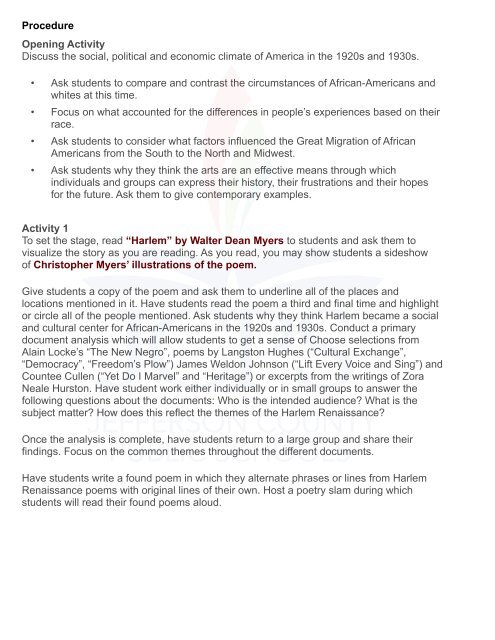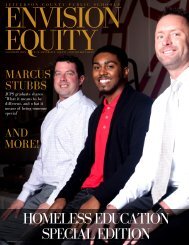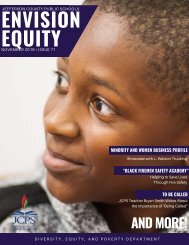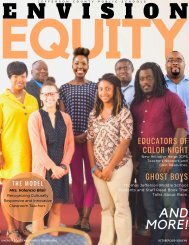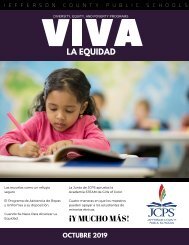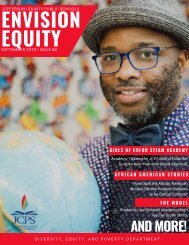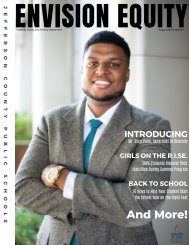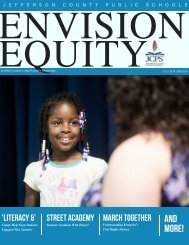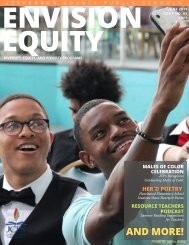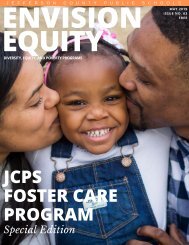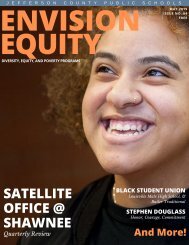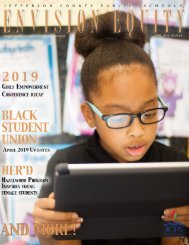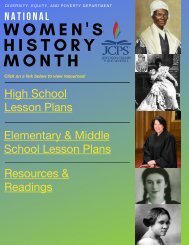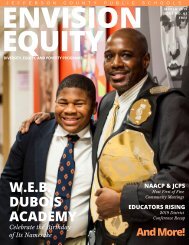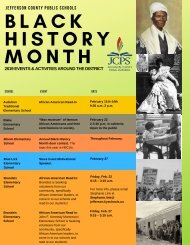Envision Equity February 2019 Special Black History Month Edition
Envision Equity February 2019 Special Black History Month Edition
Envision Equity February 2019 Special Black History Month Edition
Create successful ePaper yourself
Turn your PDF publications into a flip-book with our unique Google optimized e-Paper software.
Procedure<br />
Opening Activity <br />
Discuss the social, political and economic climate of America in the 1920s and 1930s.<br />
• Ask students to compare and contrast the circumstances of African-Americans and<br />
whites at this time.<br />
• Focus on what accounted for the differences in people’s experiences based on their<br />
race.<br />
• Ask students to consider what factors influenced the Great Migration of African<br />
Americans from the South to the North and Midwest.<br />
• Ask students why they think the arts are an effective means through which<br />
individuals and groups can express their history, their frustrations and their hopes<br />
for the future. Ask them to give contemporary examples.<br />
Activity 1<br />
To set the stage, read “Harlem” by Walter Dean Myers to students and ask them to<br />
visualize the story as you are reading. As you read, you may show students a sideshow<br />
of Christopher Myers’ illustrations of the poem.<br />
Give students a copy of the poem and ask them to underline all of the places and<br />
locations mentioned in it. Have students read the poem a third and final time and highlight<br />
or circle all of the people mentioned. Ask students why they think Harlem became a social<br />
and cultural center for African-Americans in the 1920s and 1930s. Conduct a primary<br />
document analysis which will allow students to get a sense of Choose selections from<br />
Alain Locke’s “The New Negro”, poems by Langston Hughes (“Cultural Exchange”,<br />
“Democracy”, “Freedom’s Plow”) James Weldon Johnson (“Lift Every Voice and Sing”) and<br />
Countee Cullen (“Yet Do I Marvel” and “Heritage”) or excerpts from the writings of Zora<br />
Neale Hurston. Have student work either individually or in small groups to answer the<br />
following questions about the documents: Who is the intended audience? What is the<br />
subject matter? How does this reflect the themes of the Harlem Renaissance?<br />
Once the analysis is complete, have students return to a large group and share their<br />
findings. Focus on the common themes throughout the different documents.<br />
Have students write a found poem in which they alternate phrases or lines from Harlem<br />
Renaissance poems with original lines of their own. Host a poetry slam during which<br />
students will read their found poems aloud.


